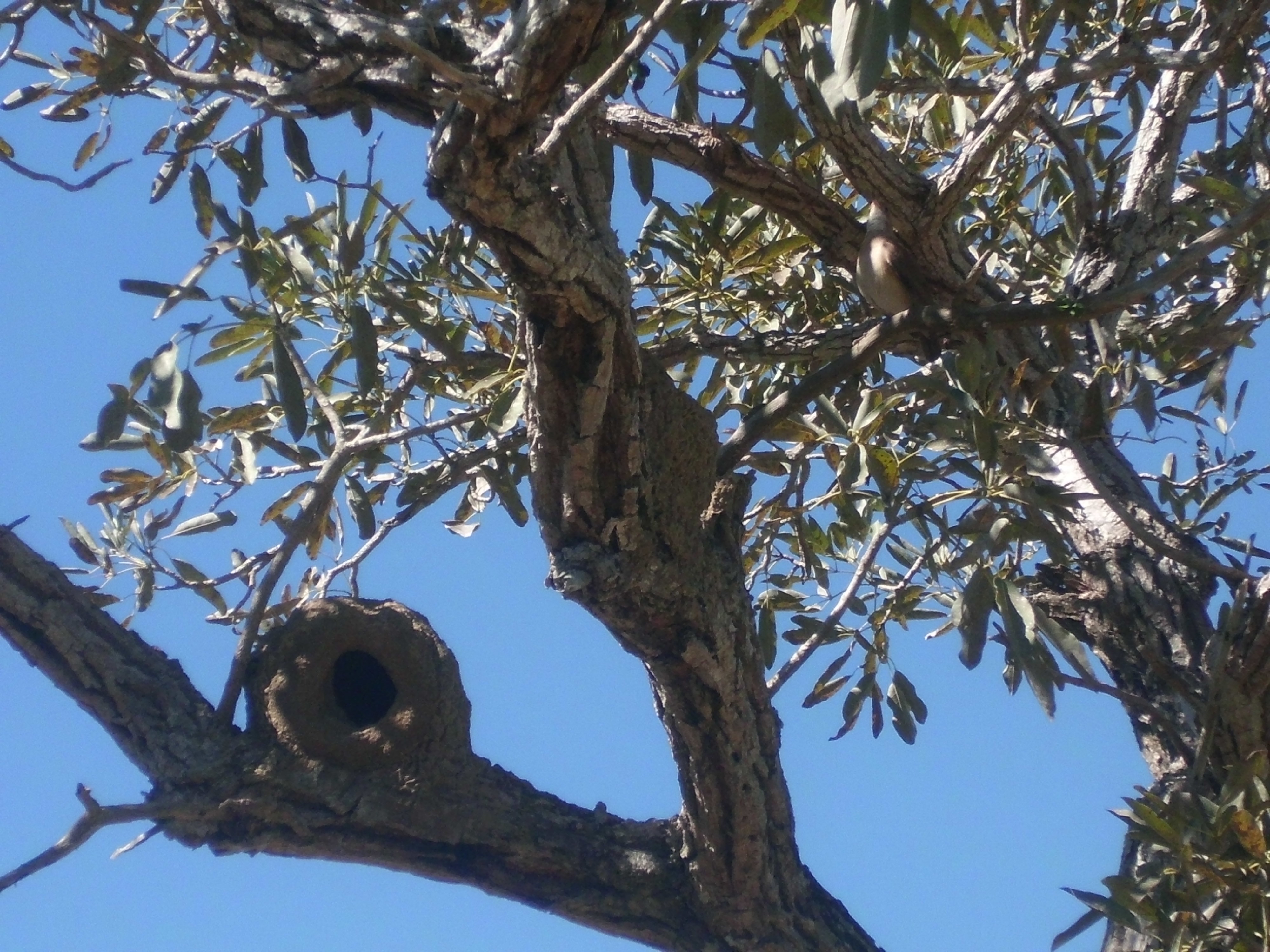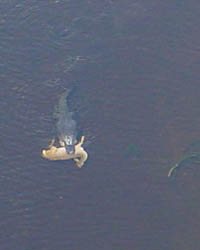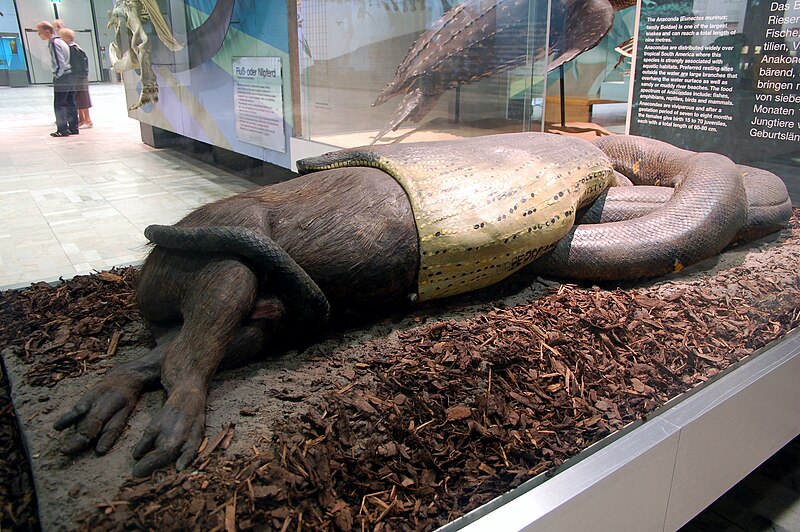The Everglades is the United States' largest wetlands. It is located in southern Florida. Several hundred species of animals live there, including 350 species of bird and alligators, manatees, and dolphins. Marsh plants, that live in water almost all of the year, are found in the Everglades, among many other species of plants.
Welcome! Thank you for visiting my blog. I hope you find the information I have available interesting and informative. Have a great day!
Monday, January 10, 2011
Friday, January 7, 2011
An Interesting Video
http://www.5min.com/Video/Global-Wetlands-in-Danger-489142510
This video helps explain the importance of wetlands and the threats that face them.
This video helps explain the importance of wetlands and the threats that face them.
Thursday, January 6, 2011
The Pantanal 16°13'31.81"S 61°43'49.37"W
The Pantanal, located in Brazil and parts of Bolivia and Paraguay, is the largest wetland in the world. The Pantanal has an area of roughly 60,000 miles and contains a variety of flora and fauna. The name "Pantanal" comes from the Portuguese word pântano, meaning wetland, bog, swamp, or marsh. Habitat destruction and pollution are just two threats the Pantanal faces that are caused by humans.
Tuesday, January 4, 2011
Ecological Succession
Primary Succession:
https://research.wsulibs.wsu.edu:8443/jspui/bitstream/2376/1151/1/v73%20p186%20Titus%20et%20al.PDF
This article describes how wetlands went through primary and secondary succession to return to their previous state 14 years after the Mount St. Helens eruption in 1980.
Definition of Primary Succession: The development of life in an area without topsoil. Primary succession occurs after events such as volcano explosions and or glacier movement.
Secondary Succession:
http://earthobservatory.nasa.gov/IOTD/view.php?id=35521
Hurricanes that ravage the coast of Louisiana often cause secondary succession in the wetlands near the Gulf of Mexico. Plant life is destroyed during these hurricanes, which means that new plant life must replace that which is destroyed during these events.
Definition of Secondary succession: Ecological succession that occurs with topsoil. This occurs after natural disasters and when disease riddles a community.
https://research.wsulibs.wsu.edu:8443/jspui/bitstream/2376/1151/1/v73%20p186%20Titus%20et%20al.PDF
This article describes how wetlands went through primary and secondary succession to return to their previous state 14 years after the Mount St. Helens eruption in 1980.
Definition of Primary Succession: The development of life in an area without topsoil. Primary succession occurs after events such as volcano explosions and or glacier movement.
Secondary Succession:
http://earthobservatory.nasa.gov/IOTD/view.php?id=35521
Hurricanes that ravage the coast of Louisiana often cause secondary succession in the wetlands near the Gulf of Mexico. Plant life is destroyed during these hurricanes, which means that new plant life must replace that which is destroyed during these events.
Definition of Secondary succession: Ecological succession that occurs with topsoil. This occurs after natural disasters and when disease riddles a community.
Interesting Characteristic
Wetlands are crucial to the survival of amphibians. Roughly 50% of all amphibians rely on wetlands for a breeding ground. If wetlands were to be eliminated, nearly half of all amphibians would be as well. This would decrease biodiversity, as explained in an earlier blog.
Monday, January 3, 2011
Human Effects on Wetlands
Humans are notorious for their negative affects on the many different types of biomes. The wetlands are not excluded from the list of biomes that are damaged by human activities. Wetlands are often the victims of draining and filling by humans. These areas are then used for the construction of new buildings or the creation of recreational lakes. This is not only common in the United States, but also throughout the world. In fact, by 1993, half of the world's wetlands had been drained. Wetlands are also subject to pollution through the dumping contaminated waters and mining for peat and other minerals.. This causes increased extinction or endangerment of organisms living in such environments. Actions like building a new condominium complex may seem beneficial at the time, but these changes to the environment will most likely negatively affect us in the future. Habitat destruction and alteration can decrease biodiversity. This may cause a decrease in food supply and security, meaning they could be more vulnerable to similar diseases and other problems. A decrease in biodiversity could also cause humans to miss out on plants and minerals that may be vital to curing diseases. Also, like mentioned in an earlier post, wetlands provide excellent protection against flooding. Without wetlands to protect areas with high precipitation, floods could occur more frequently and cause more damage. Wetlands are not easy to replace either. The expense to create artificial dams and to replace all of the services the wetlands provide would be gigantic. We humans must work towards protecting the wetlands of the world, or we will surely pay the price with the disappearance of such a necessary component of the environment.
Just one example of destruction to the wetlands by humans: http://www.post-gazette.com/pg/10354/1112232-100.stm
Thankfully, this developer paid for his crimes to the environment.
Just one example of destruction to the wetlands by humans: http://www.post-gazette.com/pg/10354/1112232-100.stm
Thankfully, this developer paid for his crimes to the environment.
Eco-tourism
If I were to educate people on the wetland biome, I would inform them of these 5 things:
1. Wetlands are vital to biodiversity. 43% of federally listed species rely directly or indirectly on wetlands for survival.
2. Wetlands help naturally control flooding by storing and slowly releasing water and by impeding the stream flow of flood water.
3. They produce huge amounts of food for humans and other organisms. Fish and rice are two main food sources provided by wetlands for humans.
4. Wetlands are a main depository for water. One acre of wetlands can contain 1 million to 1.5 million gallons of water.
5. Wetlands can produce different kinds of medicines from the plants and hydric soil of the environment.
These statements would prove how important the wetlands are to our environment, and hopefully persuade people to become involved in the preservation of our environment.
1. Wetlands are vital to biodiversity. 43% of federally listed species rely directly or indirectly on wetlands for survival.
2. Wetlands help naturally control flooding by storing and slowly releasing water and by impeding the stream flow of flood water.
3. They produce huge amounts of food for humans and other organisms. Fish and rice are two main food sources provided by wetlands for humans.
4. Wetlands are a main depository for water. One acre of wetlands can contain 1 million to 1.5 million gallons of water.
5. Wetlands can produce different kinds of medicines from the plants and hydric soil of the environment.
These statements would prove how important the wetlands are to our environment, and hopefully persuade people to become involved in the preservation of our environment.
Limiting Factors
Density-dependent limiting factor: A limiting factor whose effects depend on the size of the population depend on population density. The less dense the population, the less severe the effect of the limiting factor.
Examples: Predation and disease
Density-independent limiting factor: A limiting factor that has the same effect on a population regardless of its population density.
Examples: Natural disasters and climate
Examples: Predation and disease
Density-independent limiting factor: A limiting factor that has the same effect on a population regardless of its population density.
Examples: Natural disasters and climate
Coevolution Mechanisms
Secondary Compounds: Purple Loosestrife produce alkaloids, which are secondary compounds.
Camouflage: Yellow Crab Spider
Mimicry: Lejops lineatus
Pictures of this animal are on the following website:
http://bugguide.net/node/view/195678/bgpage
Camouflage: Yellow Crab Spider
Mimicry: Lejops lineatus
Pictures of this animal are on the following website:
http://bugguide.net/node/view/195678/bgpage
Sunday, January 2, 2011
Example of an Introduced Species and Its Effects
Gambusia affinis, or the mosquitofish, is a species of freshwater fish from the watershed of the Gulf of Mexico. It is an introduced species in Australia because it was transported there by humans to control mosquito larvae populations. It now preys upon other invertebrates besides mosquito larvae and rapidly depletes resources in the area.
Three Predator-Prey Relationships
1. American Alligator (Alligator mississippiensis) - Whitetail Deer (Odocoileus virginianus)
2. Great Blue Heron (Ardea herodias) - White Perch (Morone americana)
3. Green Anaconda (Eunectes murinus) - Capybara (Hydrochoerus hydrochaeris)
(Although this is just a display, there have been reports of such eating habits)
2. Great Blue Heron (Ardea herodias) - White Perch (Morone americana)
3. Green Anaconda (Eunectes murinus) - Capybara (Hydrochoerus hydrochaeris)
(Although this is just a display, there have been reports of such eating habits)
Endangered Species in Wetlands
The Florida panther (Puma concolor coryi) is an example of an endangered species in wetlands. The cause of their species decline used to be hunting, but it is now habitat loss. They are not well adapted to human intrusions and their population decrease displays the effect of habitat removal by humans.
Competition in Wetlands
Purple loosestrife (Lythrum salicaria) competes with cattails for a habitat in many American wetlands.
Parasitism in Wetlands
Leeches and fish or other animals. Leeches attach to their host and suck their blood, which hurts the prey.
Mutualism in Wetlands
Myrmecodia beccarii, the Ant-house plant, is in a mutual relationship with the Golden Ant (Indmyrmex cordtus). The ants remove leaf-eaters for the plant and the waste of the ant is absorbed by the plant for nutrition.
5 Common Animals
1. Muskrat (Ondatra zibethieus)
2. Great Blue Heron (Ardea herodias)
3. Mudpuppies, such as the Common Mudpuppy (Necturus maculosus)
4. The Mallard Duck (Anas platyrhynchos)
5. Painted Turtle (Chyrsemys picta)
2. Great Blue Heron (Ardea herodias)
3. Mudpuppies, such as the Common Mudpuppy (Necturus maculosus)
4. The Mallard Duck (Anas platyrhynchos)
5. Painted Turtle (Chyrsemys picta)
5 Common Plants
1. Mangroves, such as the Black mangrove (Avicennia germinans)
2. Cattails, such as the Common Cattail (Typha latifolia)
3. Species of the Lemnaceae or duckweed family, such as Spirodela polyrrhiza
4. Arrowheads, such as Sagittaria sagittifolia
5. Purple loosestrife (Lythrum salicaria)
2. Cattails, such as the Common Cattail (Typha latifolia)
3. Species of the Lemnaceae or duckweed family, such as Spirodela polyrrhiza
4. Arrowheads, such as Sagittaria sagittifolia
5. Purple loosestrife (Lythrum salicaria)
Average Precipitation and Temperature
Temperatures and precipitation vary among locations. St. Croix county of the Virgin Islands is classified as a wetland and has an average monthly precipitation of 3.3875 inches and an average monthly temperature of 81°F. This can vary greatly from an area such as Southeast Asia, where the average monthly rainfall is around 16 inches, or the Arabian Peninsula, which can reach a temperature of 122°F.
Geographic Features of Wetlands
Due to the diverse locations of wetlands, the geographic features of a wetland area may differ from each location. Wetlands can be easily classified by their flooded appearance and various plants sprouting out of the water. Mountains and other geographic features can affect wetlands because of their ability to disturb rainfall patterns and light exposure.
Type of Soil in Wetlands
The type of soil found in wetlands is called hydric soil. The definition of hydric soil is "a soil that formed under conditions of saturation, flooding or ponding long enough during the growing season to develop anaerobic conditions in the upper part" (http://soils.usda.gov/use/hydric/intro.html). Hydric soil is found in areas where the soil is saturated with water most of the growing season, like in wetland biomes.
Biotic and Abiotic Features
Abiotic features of wetlands include the climate of the wetlands, water, light, rocks and minerals, soil, and other abiotic factors found in all biomes. Biotic features of wetlands include plants, animals, bacteria, and all other living organisms.
Examples of animals: Amphibians (especially found in wetlands), reptiles, birds, insects, and mammals.
Examples of plants: Mangrove, water lilies, cattails, sedges, tamarack, black spruce, cypress, and gum plants.
Examples of animals: Amphibians (especially found in wetlands), reptiles, birds, insects, and mammals.
Examples of plants: Mangrove, water lilies, cattails, sedges, tamarack, black spruce, cypress, and gum plants.
Locations of Wetlands
The Pantanal in South America (The largest wetland area in the world), the United States, the United Kingdom, South East Asia, Iraq, South Africa, and numerous other locations throughout the world.
Subscribe to:
Posts (Atom)











.jpg)